Rachit S Munjal
On-Device Spatial Attention based Sequence Learning Approach for Scene Text Script Identification
Dec 01, 2021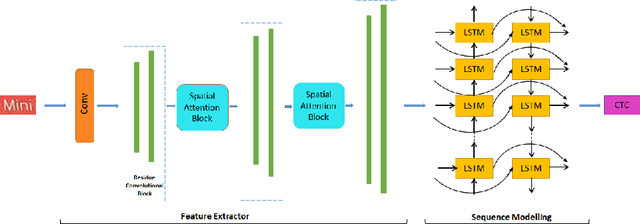
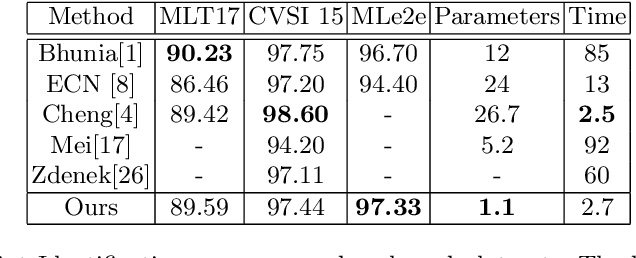


Abstract:Automatic identification of script is an essential component of a multilingual OCR engine. In this paper, we present an efficient, lightweight, real-time and on-device spatial attention based CNN-LSTM network for scene text script identification, feasible for deployment on resource constrained mobile devices. Our network consists of a CNN, equipped with a spatial attention module which helps reduce the spatial distortions present in natural images. This allows the feature extractor to generate rich image representations while ignoring the deformities and thereby, enhancing the performance of this fine grained classification task. The network also employs residue convolutional blocks to build a deep network to focus on the discriminative features of a script. The CNN learns the text feature representation by identifying each character as belonging to a particular script and the long term spatial dependencies within the text are captured using the sequence learning capabilities of the LSTM layers. Combining the spatial attention mechanism with the residue convolutional blocks, we are able to enhance the performance of the baseline CNN to build an end-to-end trainable network for script identification. The experimental results on several standard benchmarks demonstrate the effectiveness of our method. The network achieves competitive accuracy with state-of-the-art methods and is superior in terms of network size, with a total of just 1.1 million parameters and inference time of 2.7 milliseconds.
STRIDE : Scene Text Recognition In-Device
May 17, 2021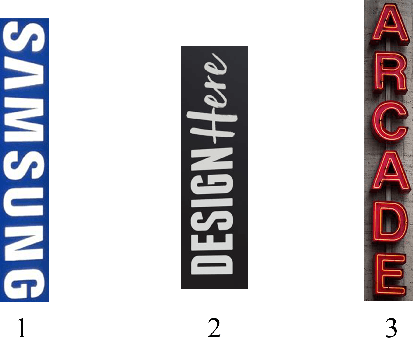

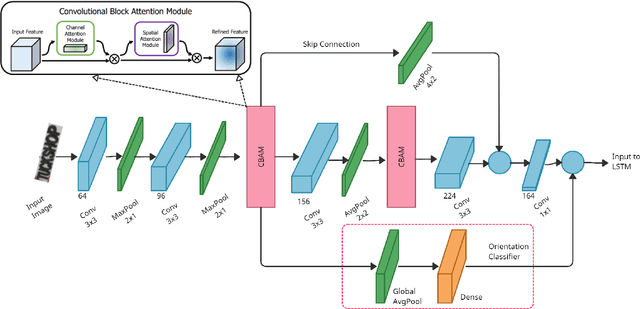

Abstract:Optical Character Recognition (OCR) systems have been widely used in various applications for extracting semantic information from images. To give the user more control over their privacy, an on-device solution is needed. The current state-of-the-art models are too heavy and complex to be deployed on-device. We develop an efficient lightweight scene text recognition (STR) system, which has only 0.88M parameters and performs real-time text recognition. Attention modules tend to boost the accuracy of STR networks but are generally slow and not optimized for device inference. So, we propose the use of convolution attention modules to the text recognition networks, which aims to provide channel and spatial attention information to the LSTM module by adding very minimal computational cost. It boosts our word accuracy on ICDAR 13 dataset by almost 2\%. We also introduce a novel orientation classifier module, to support the simultaneous recognition of both horizontal and vertical text. The proposed model surpasses on-device metrics of inference time and memory footprint and achieves comparable accuracy when compared to the leading commercial and other open-source OCR engines. We deploy the system on-device with an inference speed of 2.44 ms per word on the Exynos 990 chipset device and achieve an accuracy of 88.4\% on ICDAR-13 dataset.
TeLCoS: OnDevice Text Localization with Clustering of Script
Apr 21, 2021



Abstract:Recent research in the field of text localization in a resource constrained environment has made extensive use of deep neural networks. Scene text localization and recognition on low-memory mobile devices have a wide range of applications including content extraction, image categorization and keyword based image search. For text recognition of multi-lingual localized text, the OCR systems require prior knowledge of the script of each text instance. This leads to word script identification being an essential step for text recognition. Most existing methods treat text localization, script identification and text recognition as three separate tasks. This makes script identification an overhead in the recognition pipeline. To reduce this overhead, we propose TeLCoS: OnDevice Text Localization with Clustering of Script, a multi-task dual branch lightweight CNN network that performs real-time on device Text Localization and High-level Script Clustering simultaneously. The network drastically reduces the number of calls to a separate script identification module, by grouping and identifying some majorly used scripts through a single feed-forward pass over the localization network. We also introduce a novel structural similarity based channel pruning mechanism to build an efficient network with only 1.15M parameters. Experiments on benchmark datasets suggest that our method achieves state-of-the-art performance, with execution latency of 60 ms for the entire pipeline on the Exynos 990 chipset device.
ScreenSeg: On-Device Screenshot Layout Analysis
Apr 21, 2021
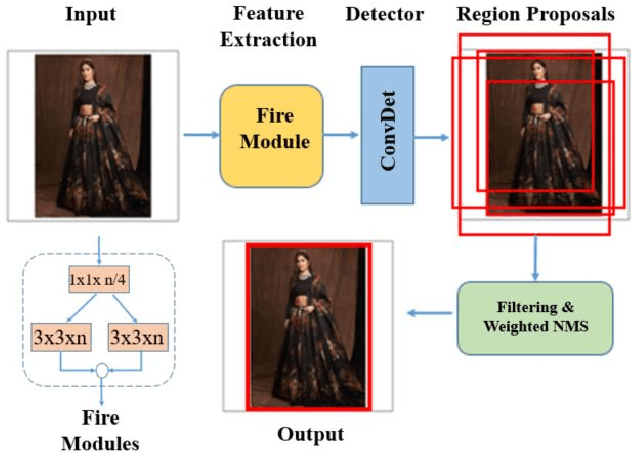

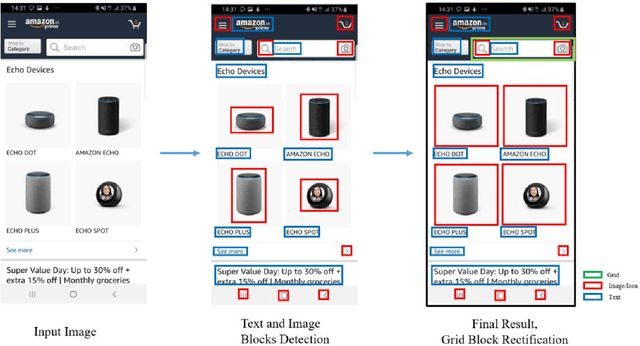
Abstract:We propose a novel end-to-end solution that performs a Hierarchical Layout Analysis of screenshots and document images on resource constrained devices like mobilephones. Our approach segments entities like Grid, Image, Text and Icon blocks occurring in a screenshot. We provide an option for smart editing by auto highlighting these entities for saving or sharing. Further this multi-level layout analysis of screenshots has many use cases including content extraction, keyword-based image search, style transfer, etc. We have addressed the limitations of known baseline approaches, supported a wide variety of semantically complex screenshots, and developed an approach which is highly optimized for on-device deployment. In addition, we present a novel weighted NMS technique for filtering object proposals. We achieve an average precision of about 0.95 with a latency of around 200ms on Samsung Galaxy S10 Device for a screenshot of 1080p resolution. The solution pipeline is already commercialized in Samsung Device applications i.e. Samsung Capture, Smart Crop, My Filter in Camera Application, Bixby Touch.
On-Device Language Identification of Text in Images using Diacritic Characters
Nov 10, 2020



Abstract:Diacritic characters can be considered as a unique set of characters providing us with adequate and significant clue in identifying a given language with considerably high accuracy. Diacritics, though associated with phonetics often serve as a distinguishing feature for many languages especially the ones with a Latin script. In this proposed work, we aim to identify language of text in images using the presence of diacritic characters in order to improve Optical Character Recognition (OCR) performance in any given automated environment. We showcase our work across 13 Latin languages encompassing 85 diacritic characters. We use an architecture similar to Squeezedet for object detection of diacritic characters followed by a shallow network to finally identify the language. OCR systems when accompanied with identified language parameter tends to produce better results than sole deployment of OCR systems. The discussed work apart from guaranteeing an improvement in OCR results also takes on-device (mobile phone) constraints into consideration in terms of model size and inference time.
 Add to Chrome
Add to Chrome Add to Firefox
Add to Firefox Add to Edge
Add to Edge